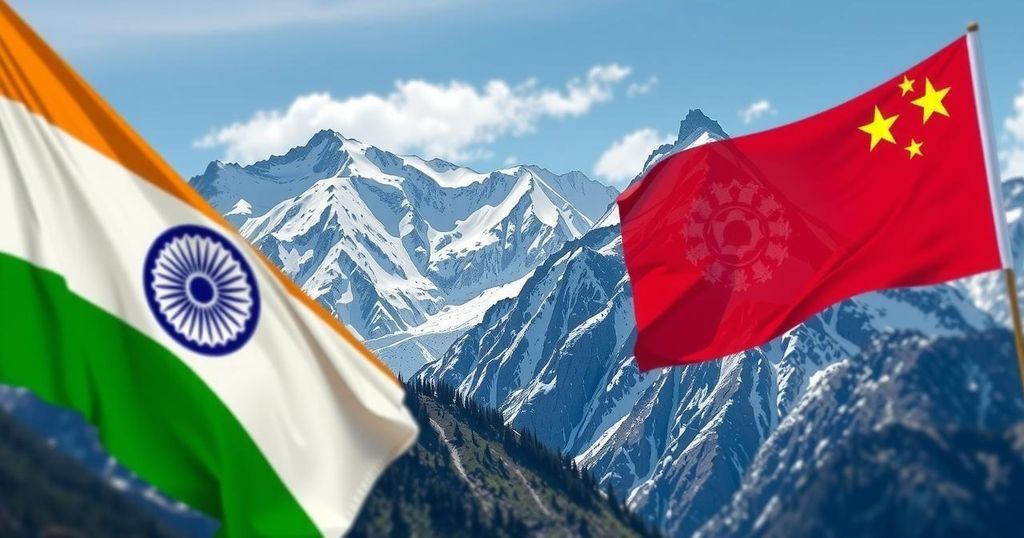India and China Initiate Troop Withdrawal to Resolve Himalayan Border Standoff
India and China have begun withdrawing troops from their contested Himalayan border, implementing an agreement to resolve a military standoff that has persisted since violent clashes in 2020. This marks a significant thaw in relations and coincides with the first formal talks between Xi Jinping and Narendra Modi in five years. Despite the easing of tensions, India remains cautious regarding the resumption of economic ties and has indicated a deliberate approach to rebuilding trust with China.
India and China have commenced the implementation of an agreement aimed at resolving a military standoff along their disputed Himalayan border, marking a significant thaw in relations between the two nations. This development follows a series of deadly clashes four years ago, where both sides faced off in the Ladakh region of the western Himalayas. According to an Indian government source, troops that were previously in close proximity at two specific points in the frontier have begun their withdrawal, signaling an end to the current standoff. The implementation of this process began on Wednesday, with a senior Indian army official indicating that it is expected to conclude by the end of this month. Earlier this week, the nuclear-armed neighbors reached an agreement regarding patrols along the frontier. This agreement facilitated the first formal discussions in five years between President Xi Jinping and Prime Minister Narendra Modi, which took place on the sidelines of the BRICS summit in Russia. Lin Jian, a spokesperson for China’s foreign ministry, stated, “According to the recently agreed solution between India and China … their frontline armies are implementing relevant work, with smooth progress so far.” In New Delhi, an unnamed government official confirmed that troops from both nations had initiated their withdrawal from the Depsang and Demchok areas, where they were stationed face-to-face. Furthermore, it was noted that returning troops would dismantle any temporary structures such as huts and tents and take back vehicles that had been deployed prior to the conflict that began in April 2020. Once this withdrawal is completed, normal patrols along the border can resume as they had previously. While neither side has disclosed the specifics of the new pact, it is anticipated that this agreement will aid in restoring the political and economic relations that were affected by the violent exchanges in 2020, where 20 Indian and four Chinese soldiers lost their lives in the Galwan Valley. Although both nations had previously withdrawn troops from five other confrontation sites, the last such withdrawal occurred over two years ago. During their recent discussions, President Xi and Prime Minister Modi agreed to enhance communication and cooperation efforts aimed at conflict resolution. Nevertheless, Indian officials have indicated a cautious approach, suggesting that New Delhi will only take incremental steps to restart economic ties with Beijing, in light of the trust issues that have arisen over the past four years. In the aftermath of the tensions, India had curtailed direct flights with China, prohibited numerous Chinese mobile applications, and imposed strict scrutiny on Chinese investments, effectively blocking significant proposals from major companies like BYD and Great Wall Motors. Reports suggest that India may now explore the prospect of reestablishing air travel and expediting visa processes to support the recent easing of tensions; however, complete reversal of previous measures against Beijing remains unlikely in the near future.
The article discusses the recent developments regarding the long-standing military standoff between India and China at their Himalayan border. This standoff has its origins in territorial disputes that have historically strained relations between the two nuclear-armed neighbors. The recent agreement signifies a collaborative effort to address and deescalate tensions that escalated substantially following deadly confrontations in 2020. The background of the relationship between India and China includes a previous war in 1962 over border disagreements, which has continued to be a point of contention in diplomatic relations between the two countries. The broader geopolitical implications, including military, economic, and political dimensions, are pivotal in understanding the importance of this recent agreement.
In conclusion, the initiation of withdrawal by Indian and Chinese troops marks a positive step towards resolving the military standoff at their Himalayan border, an issue that has plagued their relations for years. This agreement, reached during recent high-level talks, is anticipated to pave the way for improved political and economic relations. However, India remains cautious in its approach toward rekindling economic ties with China, balancing the necessity for collaboration against a backdrop of trust deficits from previous conflicts. Continued diplomatic engagement and a gradual return to normalcy in interactions may signal progress toward a more stable regional relationship.
Original Source: www.foxnews.com








Post Comment